Our recent visit to Gameplayarts, a novel art gallery and hub for game-based video art located in Los Angeles, presented an opportunity to engage with Alice Bucknell’s remarkable multimedia artwork, The Alluvials. On display between April 4th – May 4th 2024 as both machinima and video game, The Alluvials examines ecological crises and anthropogenic impacts, with a focus on water scarcity in a speculative future Los Angeles.
The Alluvials combines a variety of media, including a playable game, video narratives, 3D city scans, and creatively modified gaming environments to richly convey its ecological themes. This multimedia integration promotes an immersive experience that seamlessly bridges the digital and concrete realities, ideally suited for an art gallery setting where the two can coexist harmoniously. At Gameplayarts, the amalgamation of on-site installations and screen-based experiences was carefully curated by Jamin Warren, showcasing a grasp of the medium’s nuances seldom observed in contemporary art venues.
The exhibition space was characterized by vibrant, multicolored lighting casting a surreal glow across the room, enhancing the immersive quality of the installation. Multiple large screens were strategically placed around the space, each displaying various scenes or interactive prompts from the game. The setting included uniquely shaped, wooden installations resembling natural forms like trees, which were integrated with the gaming screens, adding an organic touch to the high-tech environment. Powerful black gaming computers with glowing green lights, running the interactive game components, were sitting on white pedestals, emphasizing their importance to the functionality of the exhibition and, more in general, to the crucial role they play in our increasingly digital world. The seating arrangement included several beanbag chairs with a distinctive camouflage pattern, providing a casual and comfortable viewing experience. Overall, the neon outlined on the wooden installations and the strategic lighting contribute to a visually striking and engaging atmosphere. The exhibition also featured themed merchandise — such as camouflage hats displayed on a lit table — aligning with the overall aesthetic of the installation. Another part of the exhibition included large panels with digital art, each representing game environments or thematic elements related to The Alluvials. These artworks used a pixelated style and were bathed in the same vibrant lighting that dominates the space.
Bucknell’s narrative in The Alluvials emphasizes nonhuman and elemental perspectives — such as the Los Angeles River, wildfire, and the historic sycamore El Aliso — to highlight the interconnectedness of natural elements and challenge the prevalent human-centric view of the environment. Rather than anthropomorphizing these non-human actors and entities, Bucknell maintains their inherent agency, aligning her work with intellectual explorations like James Bridle’s Ways of Being, which provides a thoughtful synthesis on understanding intelligence and agency in various forms.
The video component of The Alluvials primarily functions as a narrative medium, delivering its story through a blend of visual and auditory elements without necessitating direct interaction from viewers. It utilizes custom-built game environments, drone-captured 3D scans, and altered imagery to craft its message. Complementing the machinima, a video game element extends the narrative across five distinct levels, each embodying different gaming genres and environmental themes. This interactive aspect allows visitors to explore the story through the roles of non-playable characters (NPCs), such as wildfire and the LA River, thereby deepening their engagement with the presented ecological issues.
The game challenges conventional gameplay mechanics across various genres — first-person shooter, walking simulator, open world, puzzle platform — encouraging viewers to critically think about ecological and environmental issues. In other words, the video and game components work in synergy: the video provides a controlled, author-driven exploration, while the video game offers a participatory, player-driven engagement, emphasizing personal involvement in the ecological challenges depicted.
The Alluvials critiques the management of natural resources and engineered ecosystems in Los Angeles, scrutinizing the repercussions of human interventions and market dynamics on the environment. It also underscores the significance of data in representing and understanding ecological issues by incorporating real pollution statistics into its aesthetic and narrative structure. Recognizing the indigenous Tongva People and their historical relationship with the LA River, Bucknell connects present ecological challenges to deeper historical and cultural narratives, highlighting a long-standing, respectful interaction with nature.
By integrating concepts of “game ecologies” and queer gaming strategies, the artist not only challenges traditional gaming conventions but also promotes more inclusive and ecologically conscious gaming practices. Through the practice of worlding to co-construct new realities, the project advocates for a shift from anthropocentric ideologies towards a more symbiotic relationship with the environment.
In essence, The Alluvials serves as both a speculative exploration and a critical reflection on environmental degradation, technological mediation, and the potential for a future that redefines relationships between humans and nonhumans. The exhibition at Gameplayarts presented a strikingly curated fusion of art, technology, and interactive media, providing visitors with a multi-sensory journey that disrupts conventional views of video art and gaming.
Colleen Flaherty is a visual artist living and working between Los Angeles and Milan
Gameplayarts is located at 5511 W. Pico Blvd. in Los Angeles California
Read more about Alice Bucknell’s work
All photographs courtesy of Gameplayarts. Credits: Sam Hanke
All videos and images of The Alluvials courtesy of Alice Bucknell

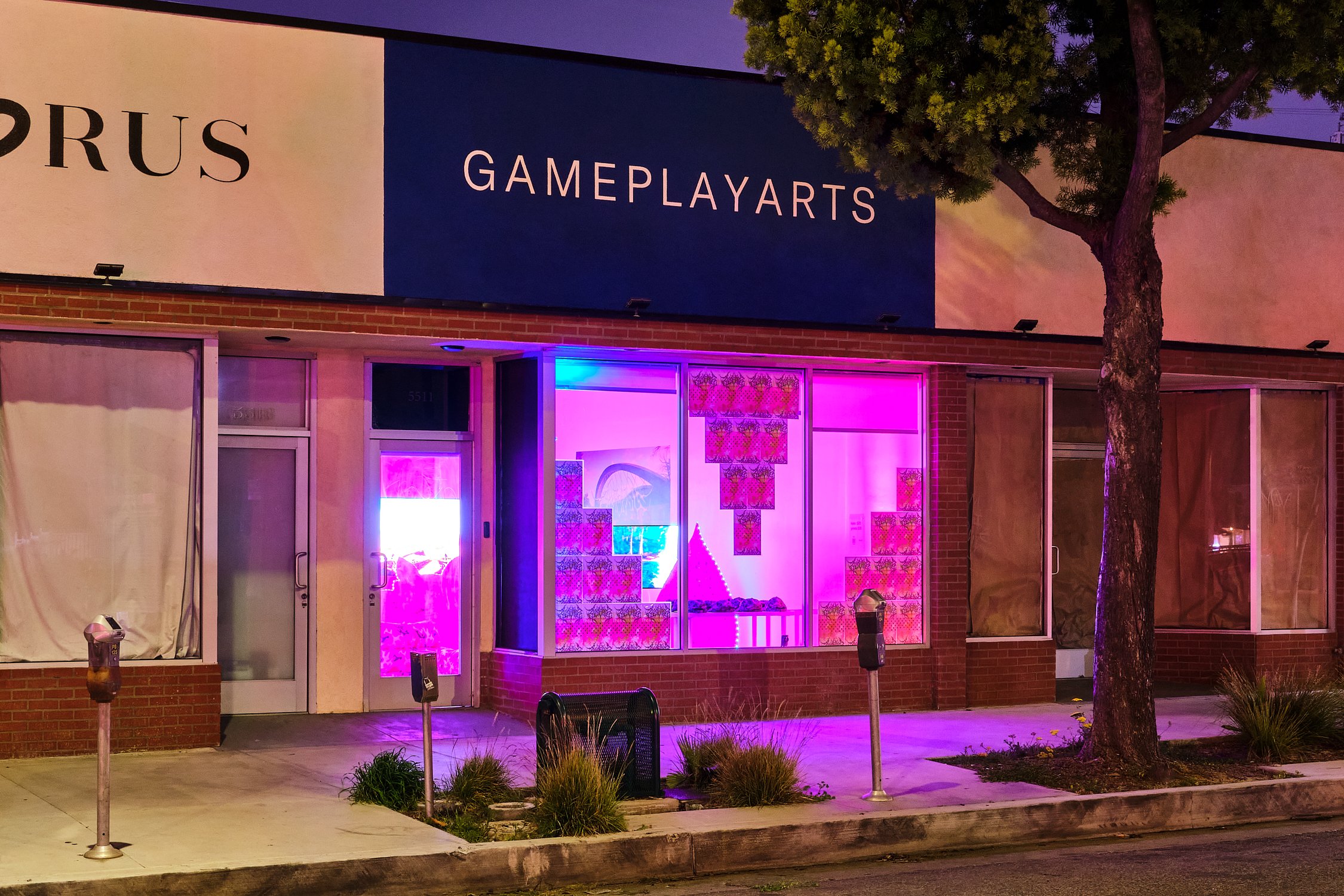


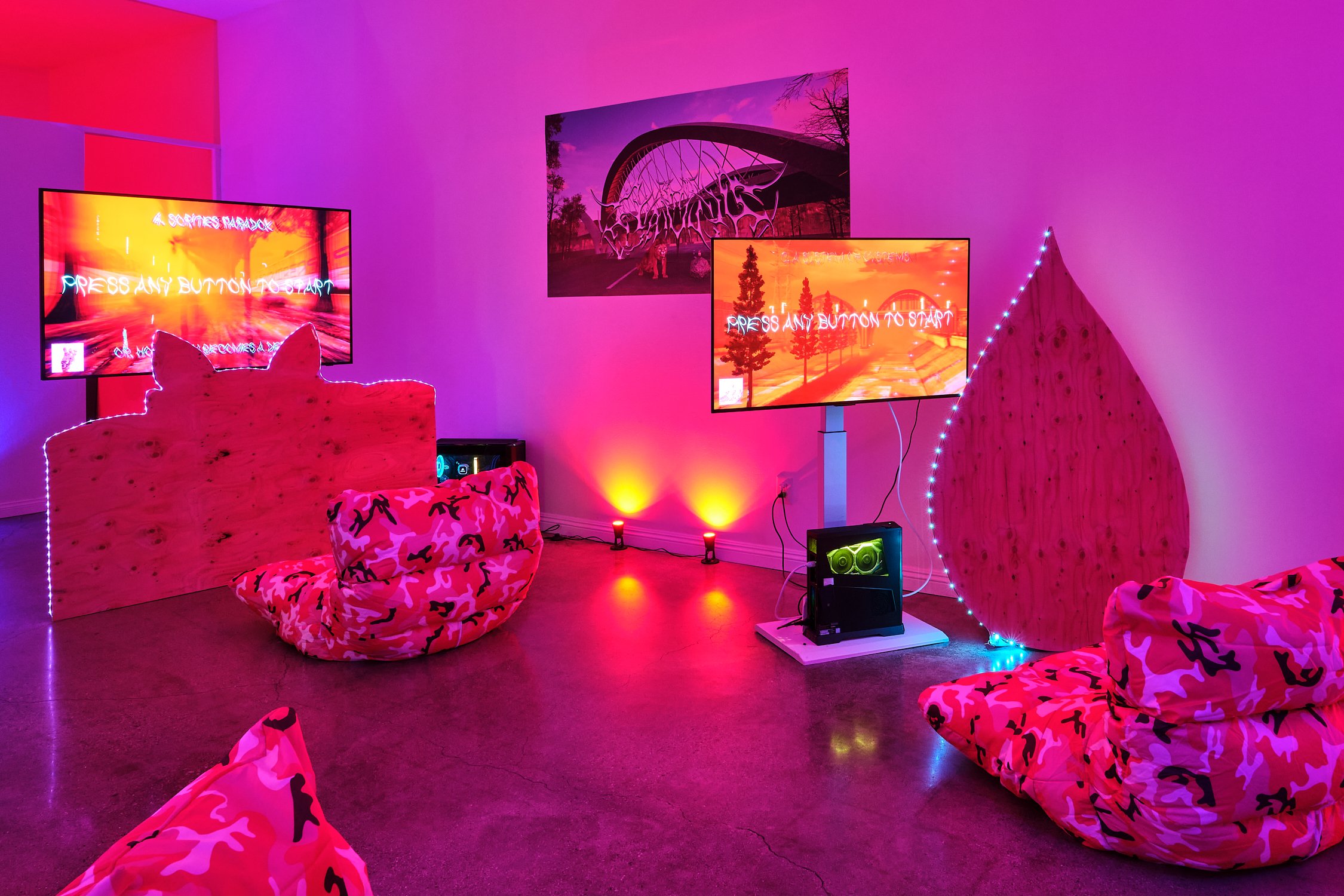
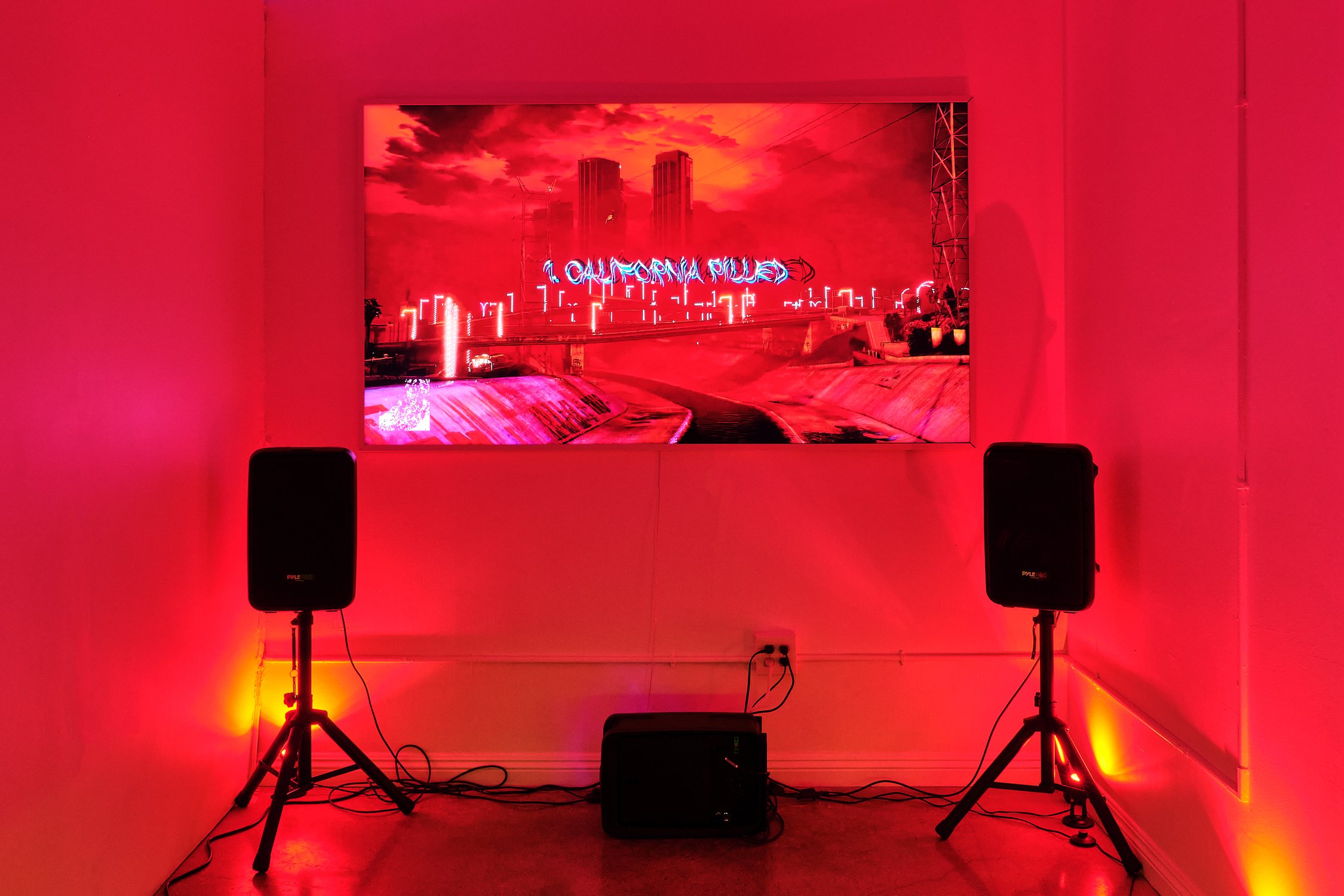
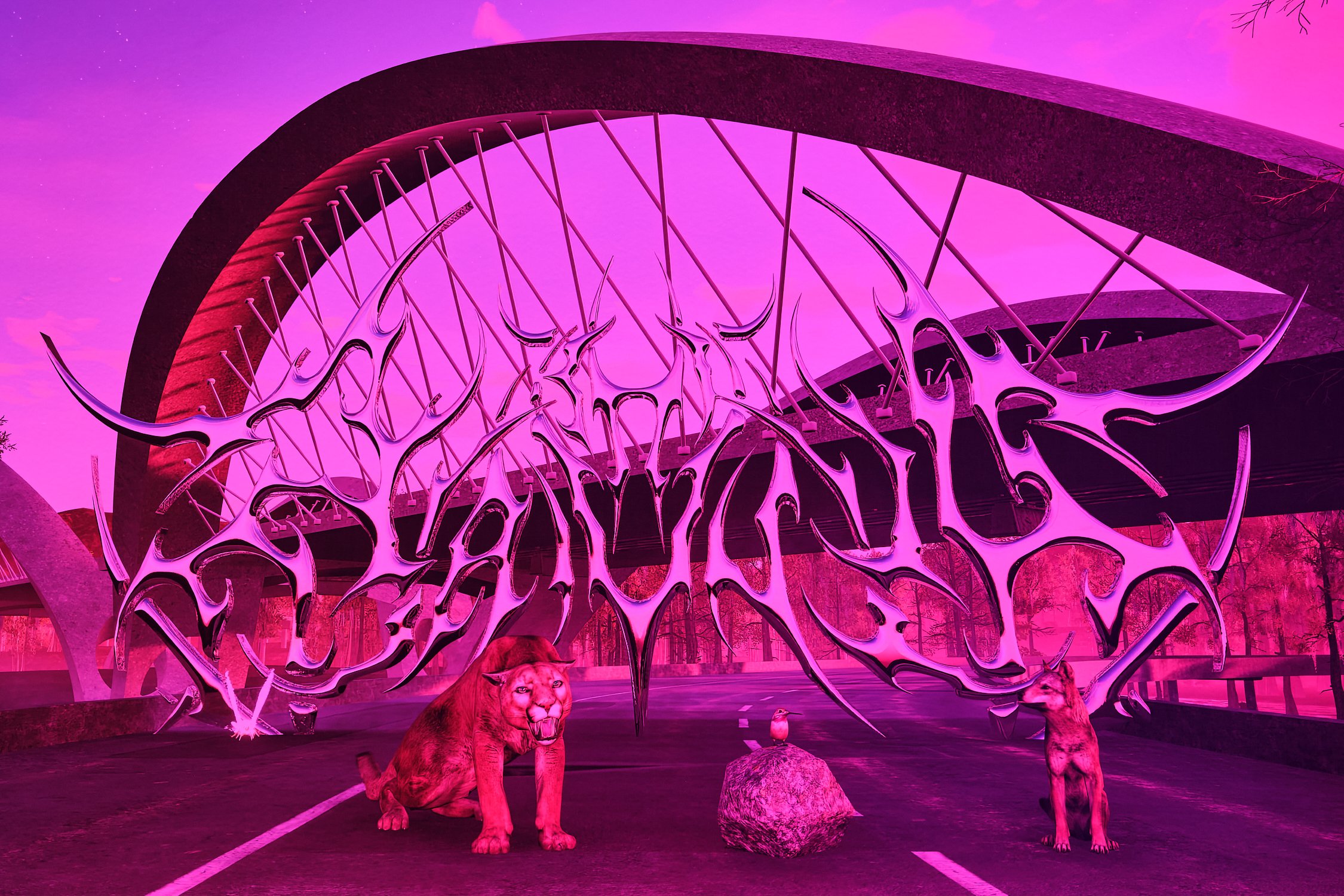
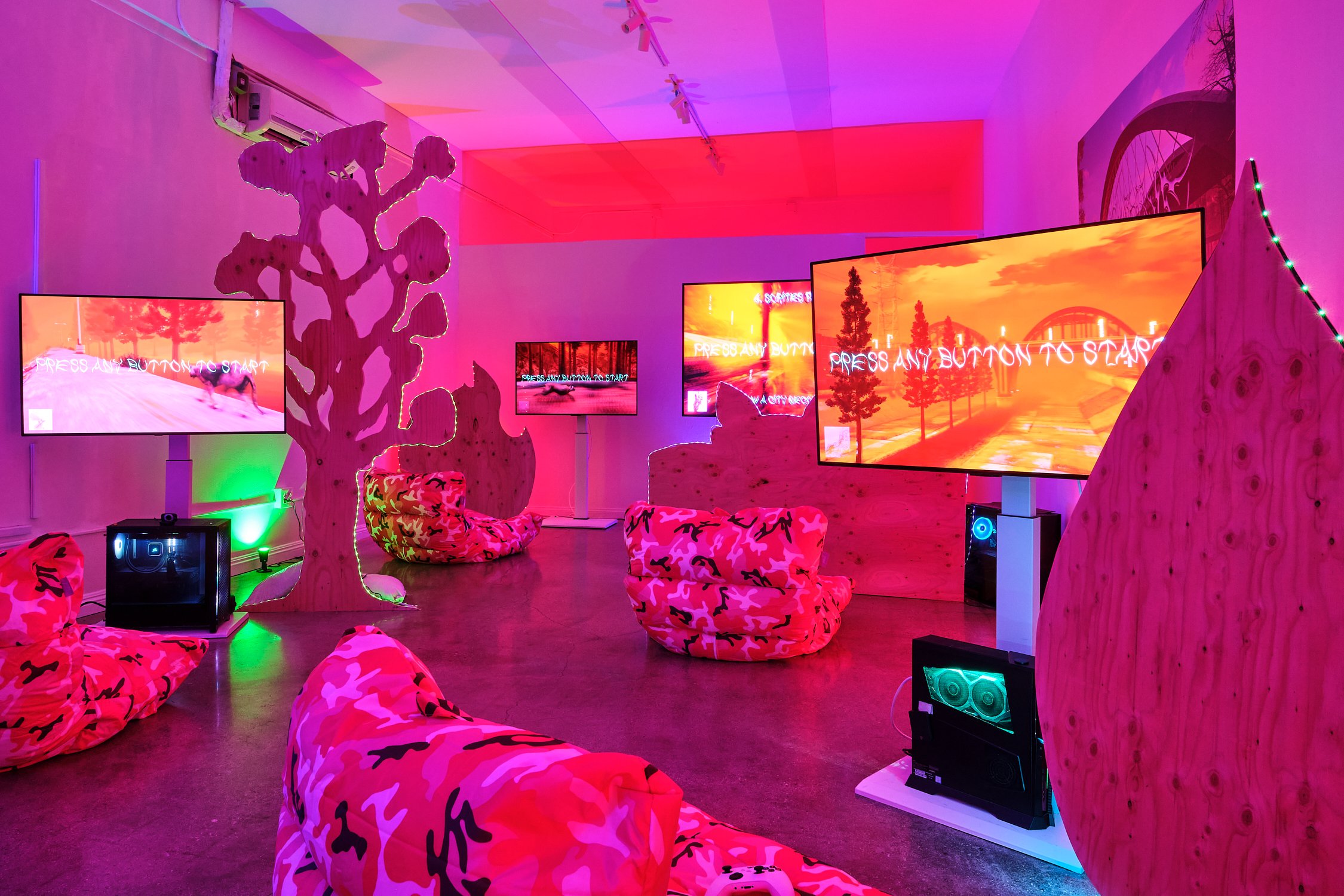
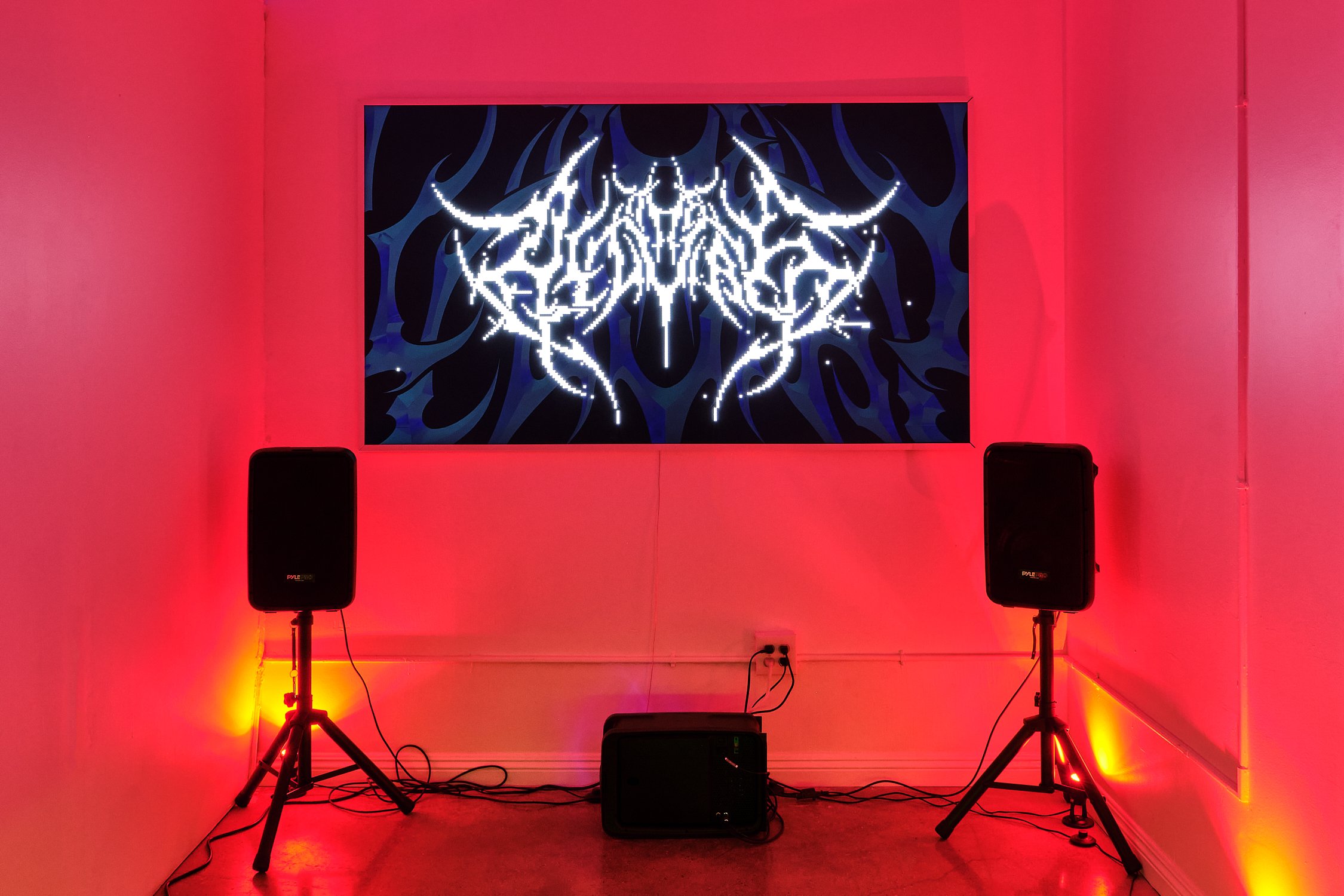
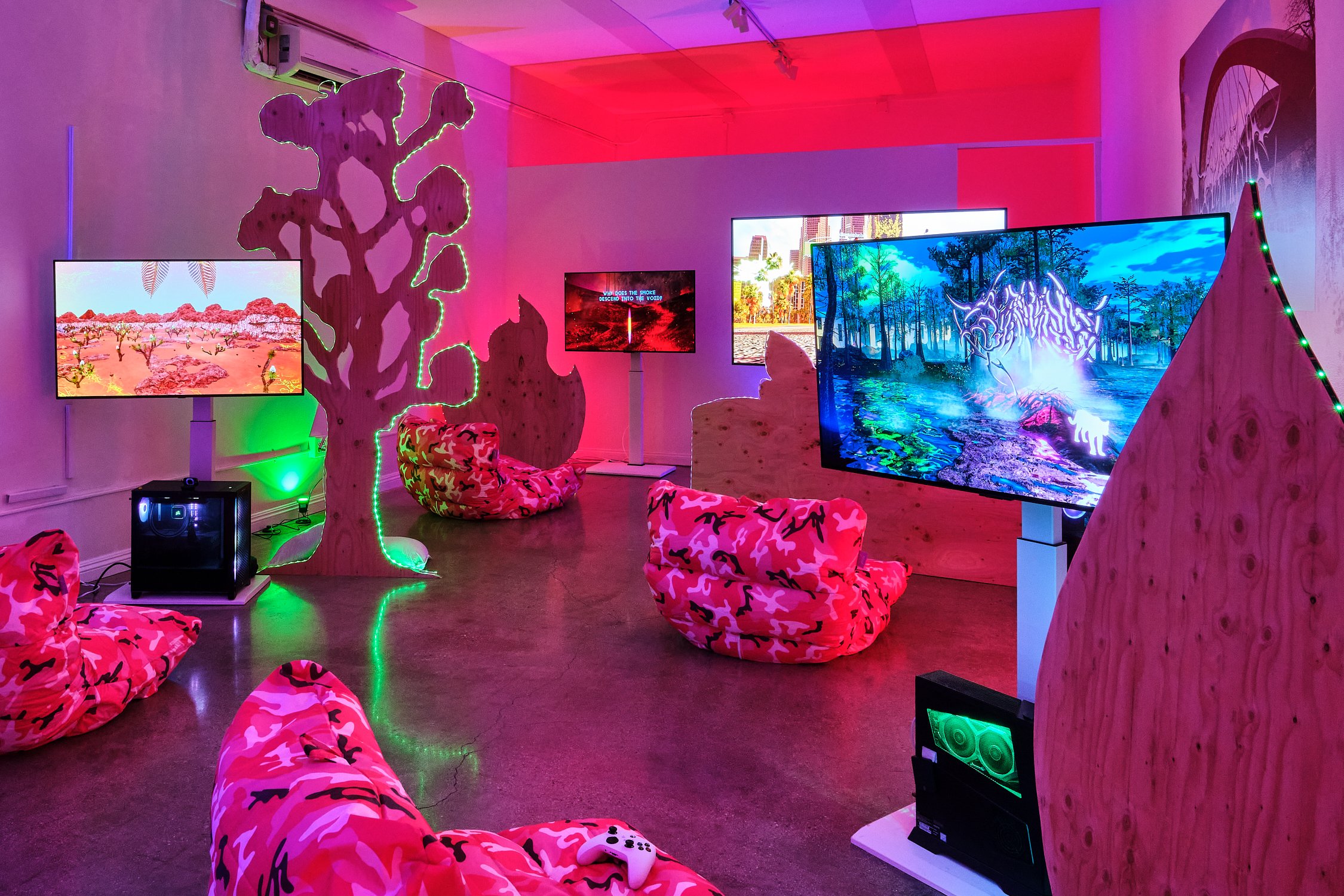
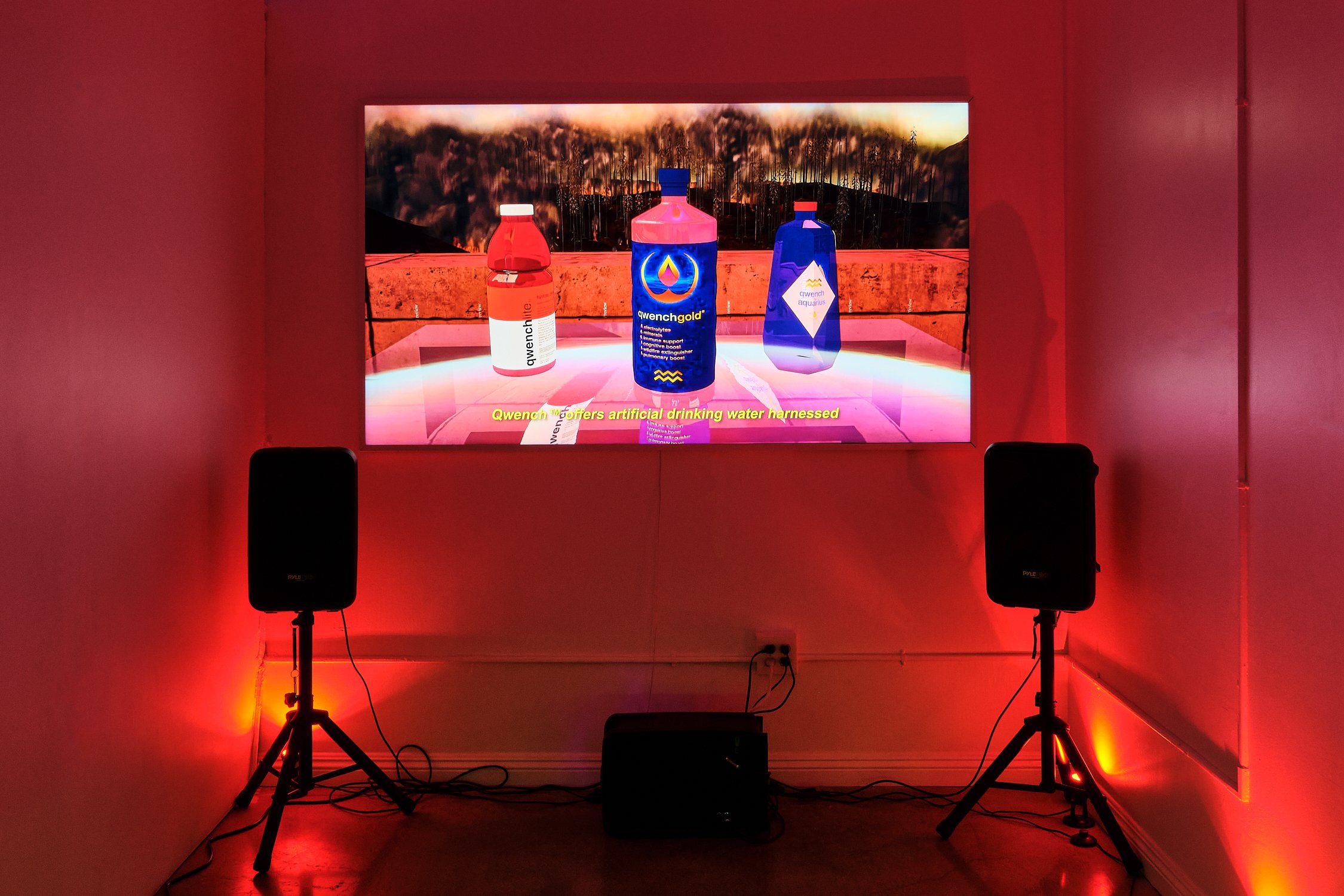
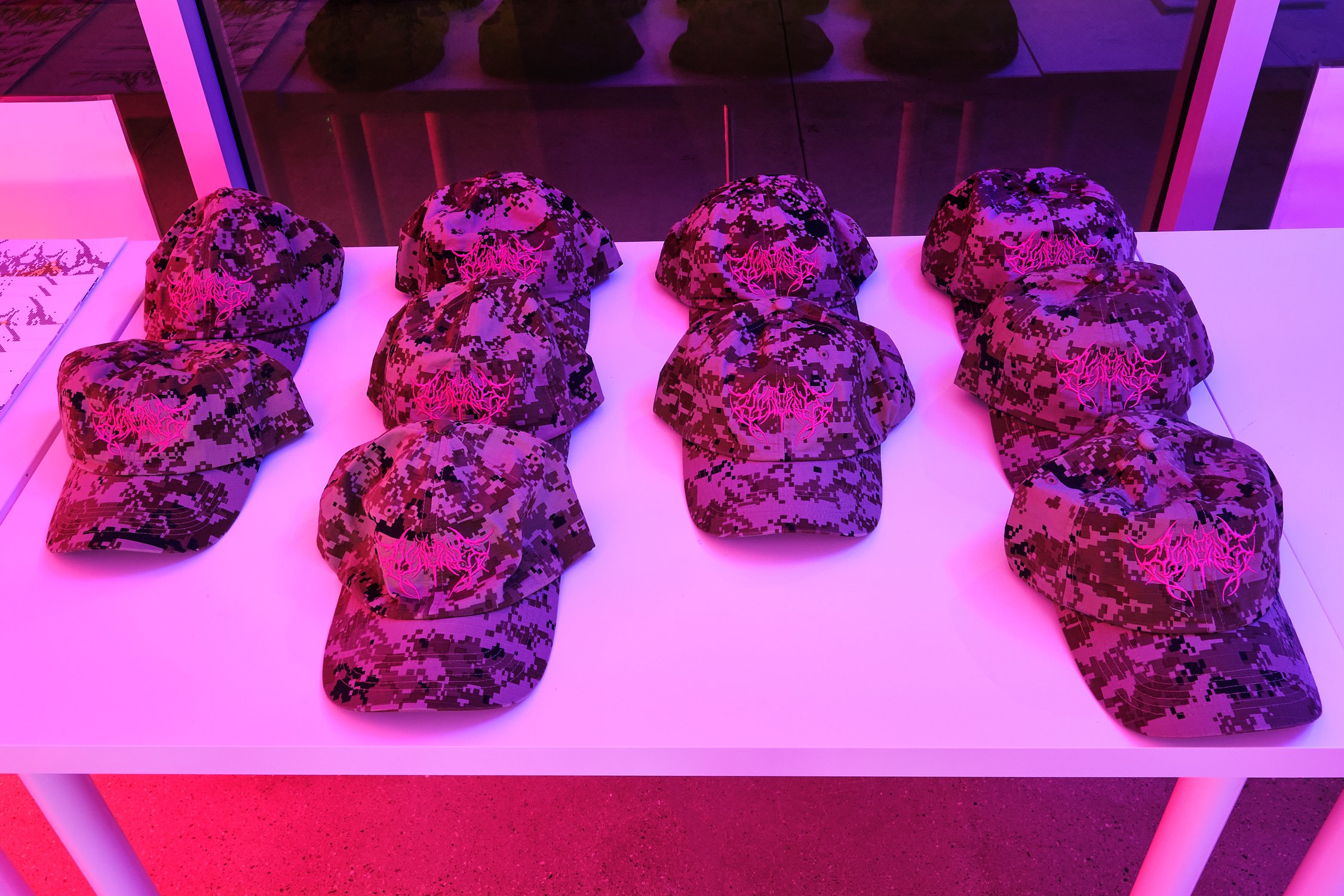

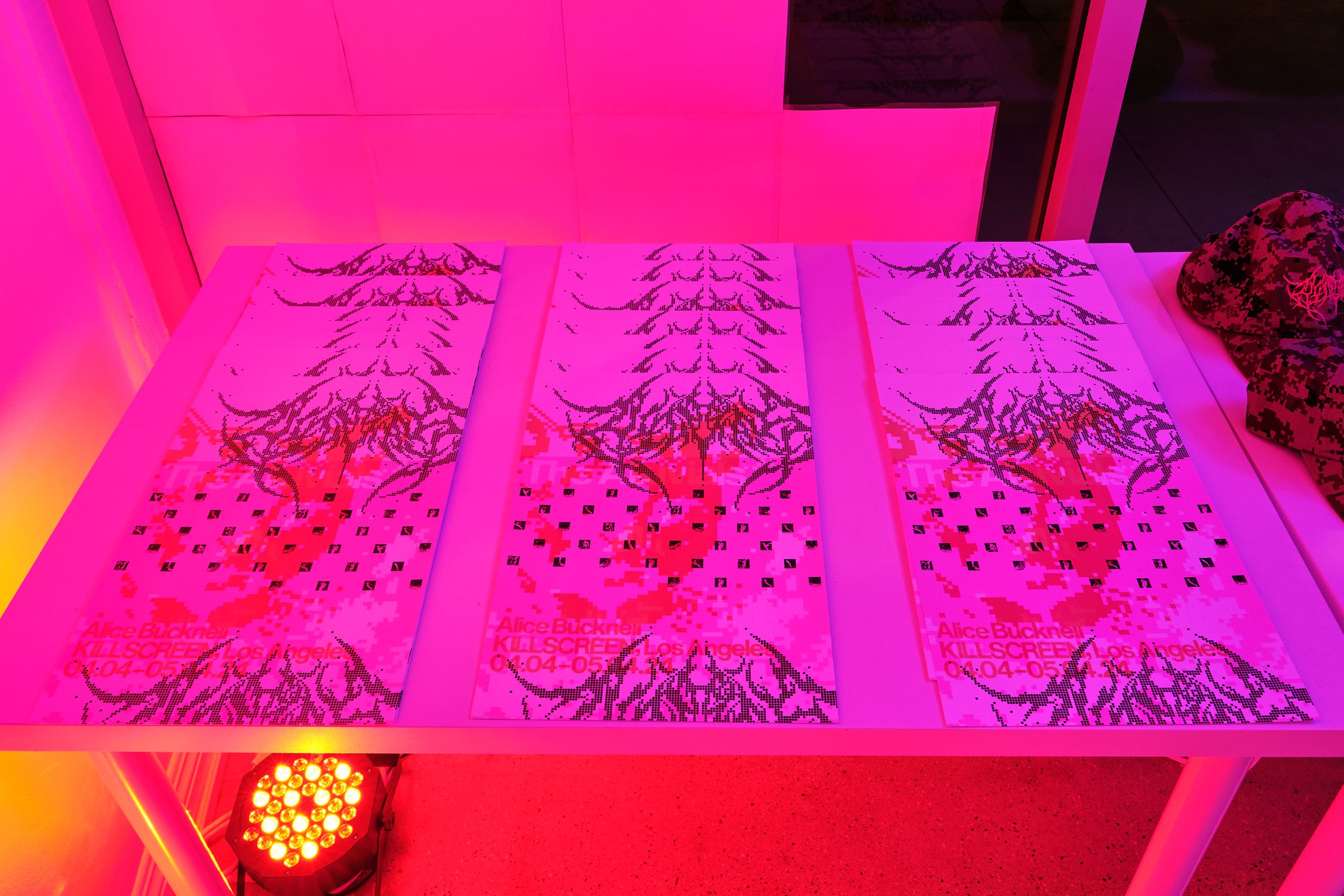
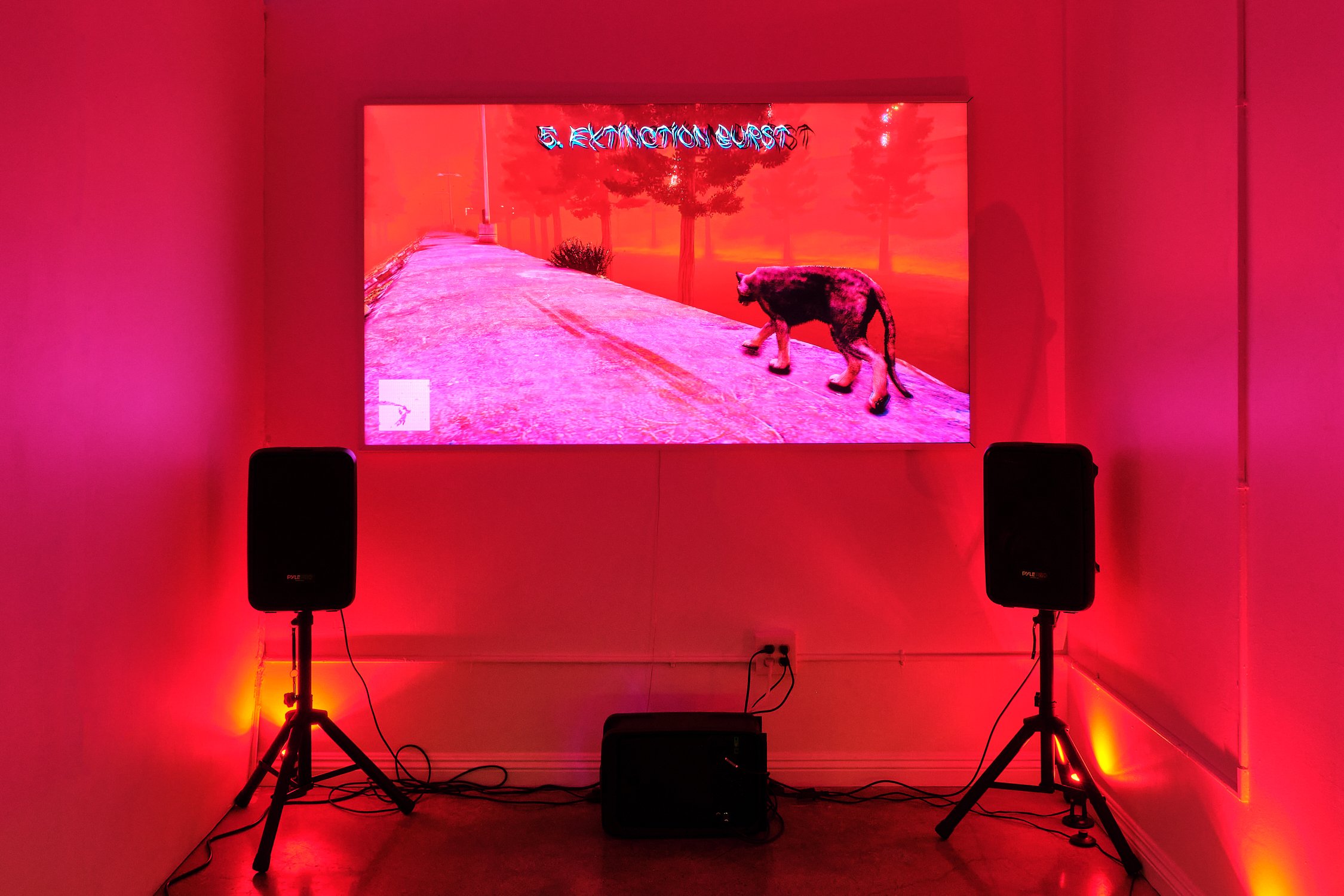
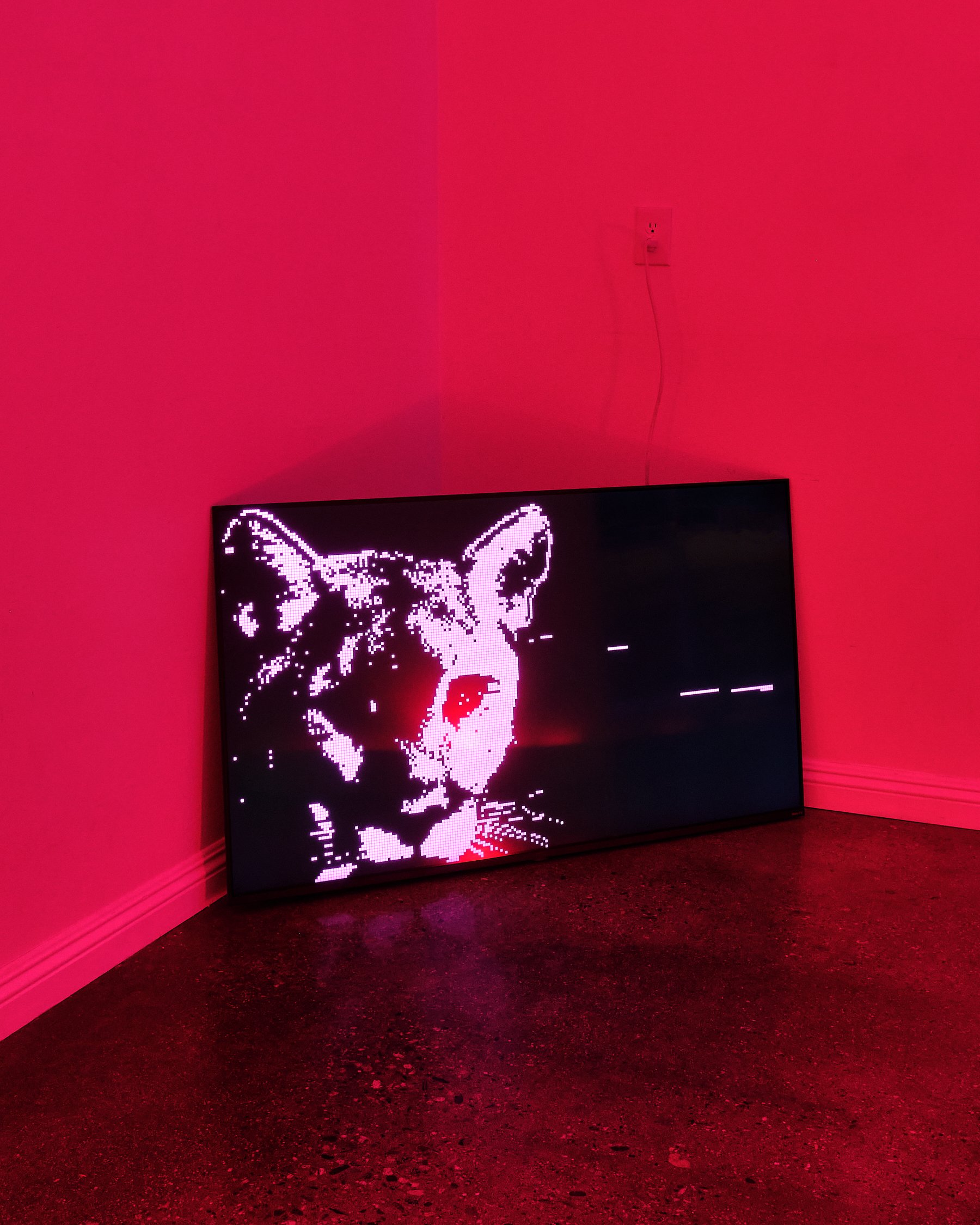


![Mikhail Maksimov, S.A.R. Online Sessions , online game, 2021 [2020]](https://images.squarespace-cdn.com/content/v1/5a92a15fcef372c749ca0487/1691139674798-H9FCA5YNHXM0D6XHLUEV/Mikhail+Maksimov_2021_2.jpg)
![Mikhail Maksimov, S.A.R. Online Sessions , online game, 2021 [2020]](https://images.squarespace-cdn.com/content/v1/5a92a15fcef372c749ca0487/1691139675228-19ZURU7SYLMXBEQKLX54/Mikhail+Maksimov_2021_5.jpg)
![Mikhail Maksimov, S.A.R. Online Sessions , online game, 2021 [2020]](https://images.squarespace-cdn.com/content/v1/5a92a15fcef372c749ca0487/1691139676152-IZ7G8UFIUR5B0DDWEGPK/Mikhail+Maksimov_2021_1.jpg)
![Mikhail Maksimov, S.A.R. Online Sessions , online game, 2021 [2020]](https://images.squarespace-cdn.com/content/v1/5a92a15fcef372c749ca0487/1691139676560-8KH7UPO7P6NPNFB3VVY2/Mikhail+Maksimov_2021_4.jpg)
![Mikhail Maksimov, S.A.R. Online Sessions , online game, 2021 [2020]](https://images.squarespace-cdn.com/content/v1/5a92a15fcef372c749ca0487/1691139677434-Q4UVJLJ7T8JH0O5UNF8L/Mikhail+Maksimov_2021_3.jpg)
